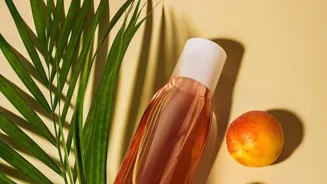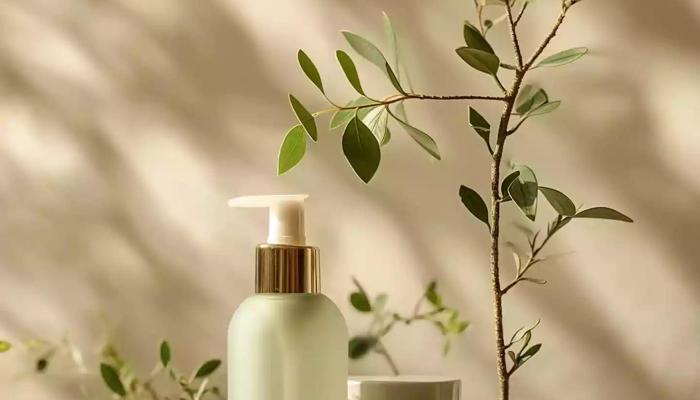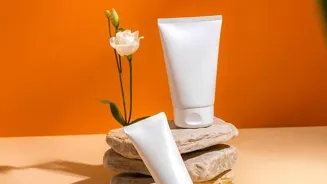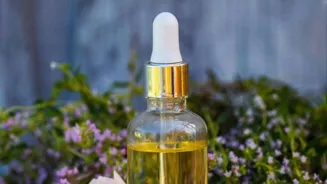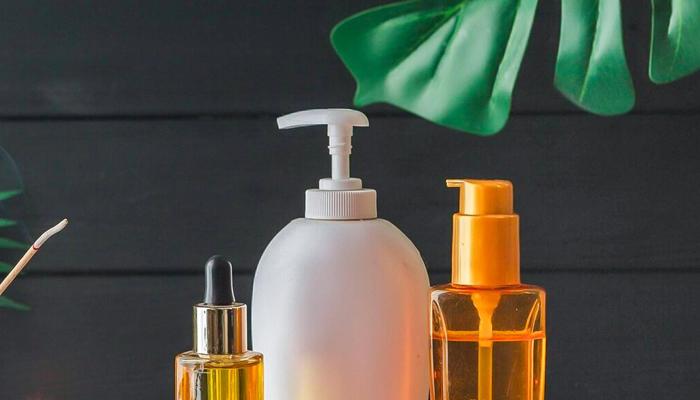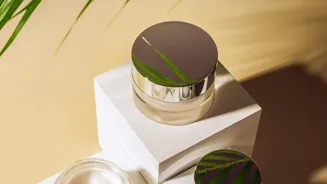Unlock Radiant Skin: The Power of Exfoliation! Dive into 7 Easy Techniques for Glowing Skin. Find out more!
Hello viewers! Every one of us wishes for that healthy, glowing skin, right? But often, our skin can
look dull because of dead skin cells sitting on the surface. That's where exfoliation comes into play. Think of it as giving your skin a refreshing clean-up.
It is an essential part of any good skincare routine. Let's understand why it's so important and some super easy methods you can try at home. Exfoliation is simple but effective treatment. This helps remove the dead skin cells to provide a healthier and glowing skin.
Why Exfoliate?
Unveiling the Benefits
Exfoliation isn't just about making your skin feel smooth; it plays a crucial role in its overall health and radiance. When you exfoliate, you are essentially removing that top layer of dead skin cells. This helps unveil the fresher, brighter skin underneath.
The process also encourages cell turnover. This means your skin will naturally generate new cells more efficiently, leading to a more youthful appearance. In addition, exfoliation can help unclog pores, preventing those pesky blackheads and whiteheads from forming.
You will observe a reduction in acne breakouts. It also allows your skincare products such as moisturizers and serums to penetrate better, making them more effective.
Plus, regular exfoliation can even out skin tone and fade away blemishes. This includes sunspots and acne scars.
This is like resurfacing your skin and giving you a more even complexion. Exfoliated skin reflects light better. This creates that coveted radiant glow.
If you want improve circulation it is important to massage your face gently during exfoliation, boosting blood and nutrient supply to your skin cells. This leads to healthier skin. Simply put, exfoliation is a multi-tasker that offers a multitude of benefits for all skin types.
It is a fundamental part of any skincare regime. This ensures your skin continuously looks it is best. It’s like pressing the reset button for a revitalized and radiant complexion.
Two Main Types: Chemical vs.
Physical Exfoliation
When it comes to exfoliation, there are two main categories to consider: chemical and physical. Physical exfoliation involves using tools or granular substances to manually scrub away dead skin cells.
Think of things like face scrubs, cleansing brushes, or even a simple washcloth. It gives instant gratification, as you can feel the dead skin being removed. However, it is important to be gentle to avoid irritation, especially if you have sensitive skin.
Chemical exfoliation, on the other hand, utilizes acids or enzymes to dissolve the bonds holding dead skin cells together.
Common chemical exfoliants include AHAs (alpha-hydroxy acids) like glycolic and lactic acid, and BHAs (beta-hydroxy acids) like salicylic acid.
These are often found in serums, peels, or toners. Chemical exfoliation might sound intimidating, but it can be incredibly effective for addressing a variety of skin concerns, from acne to hyperpigmentation.
AHAs are great for addressing surface-level concerns like dullness and dryness, while BHAs can penetrate deeper into pores to clear out oil and debris. The choice between chemical and physical exfoliation depends on your skin type and concerns.
Both can be effective.
The key is to find the method that works best for you and to use it responsibly as per your skin. Remember to always patch test a new product, especially chemical exfoliant, to check for any sensitivity or allergic reaction. Also, it is extremely essential to be patient.
Consistency is very important, as most exfoliants take some days or weeks to show a noticeable difference. Start with minimal usage and gradually increase frequency if needed. Prioritize the health and well being of the skin throughout the process.
7 Easy Techniques for Exfoliation: Find Your Match
Now that we know why and what, let’s dive into how! Here are seven easy exfoliation techniques you can incorporate into your skincare routine:
Gentle Face Scrub
A classic for a reason! Look for scrubs with fine, rounded particles like jojoba beads or sugar. Avoid harsh scrubs with large, irregular particles that can cause micro-tears in the skin.
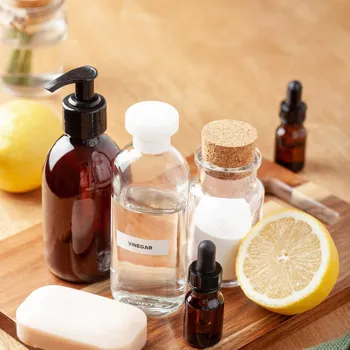
Washcloth Exfoliation
One of the simplest and most affordable methods. Just use a soft washcloth with your regular cleanser in gentle circular motions.
Cleansing Brush
These battery-powered brushes offer a deeper cleanse and exfoliation. Choose one with soft bristles and use it sparingly.
AHA Serums
Serums containing AHAs like glycolic or lactic acid gently exfoliate the skin overnight. Start with a low concentration and use it a few times a week.
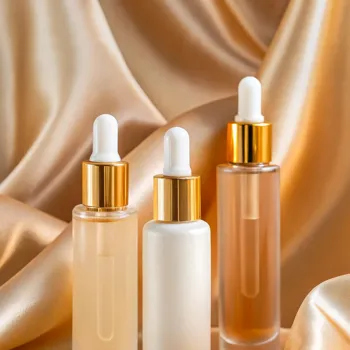
BHA Toners
Toners with salicylic acid can help unclog pores and reduce breakouts. Perfect for oily or acne-prone skin.
Homemade Sugar Scrub
Mix sugar with honey or oil like olive oil for a natural, DIY scrub.

Enzyme Masks
Masks containing fruit enzymes like papaya or pineapple gently digest dead skin cells, leaving your skin feeling soft and smooth. The skin rejuvenates with regular use of fruit enzyme masks.
These methods are easy to do at home. Ensure to follow all necessary instructions while doing the process so avoid any skin damages. Also, keep in mind the sensitivity of your skin before trying a product. You can consult a professional for the same.
Important Considerations: Listen to Your Skin
It’s exciting to try new things for your face. Before you jump into exfoliation, it's crucial to consider your skin type and condition. If you have sensitive skin, eczema, or rosacea, approach exfoliation with caution.
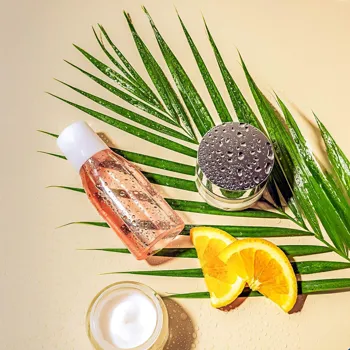
Opt for gentle methods like enzyme masks or washcloth exfoliation, and avoid harsh scrubs or high-concentration chemical exfoliants. Over-exfoliating can strip your skin of its natural oils, which leads to dryness, irritation, and even breakouts.
It’s best to start slow.
Exfoliate once or twice a week and gradually increase the frequency as your skin tolerates it. Always pay attention to how your skin feels. If you experience redness, stinging, or excessive dryness, cut back on exfoliation. Remember, less is often more!
Additionally, always wear sunscreen during the day, especially after exfoliating. Exfoliation makes your skin more sensitive to the sun’s harmful rays. A broad-spectrum sunscreen with an SPF of 30 or higher is a must-have in your skincare routine.
Remember to always select all-natural products.
Consult your family dermatologist before using any new product for your skin. Also, take proper guidance before starting any procedure because the health of your skin is of utmost importance.
Don't Forget to Moisturize
Exfoliation is important. So is moisturizing!
After exfoliating, your skin is primed to absorb moisture and nutrients more effectively. Always follow up with hydrating moisturizer to replenish your skin's moisture barrier. This will help prevent dryness, irritation, and inflammation.
Look for moisturizers containing ingredients like hyaluronic acid, glycerin, and ceramides. These help to attract and retain moisture in the skin. If you have oily skin, opt for a lightweight, oil-free moisturizer to avoid clogging your pores.
Think about using a nourishing facial oil after moisturizing. This provides an extra layer of protection and helps to seal in hydration. Look for oils like rosehip seed oil, jojoba oil, or argan oil, known for their moisturizing and anti-inflammatory properties.
Hydrating your skin after exfoliation is a crucial step in maintaining a healthy and radiant complexion. It ensures your skin stays balanced, supple, and protected from environmental stressors.
Give your skin a lot of love, use a good exfoliant (if required depending on the skin), and look beautiful forever. You've got this!
AI Generated Content. Glance/InMobi shall have no liability for the content
